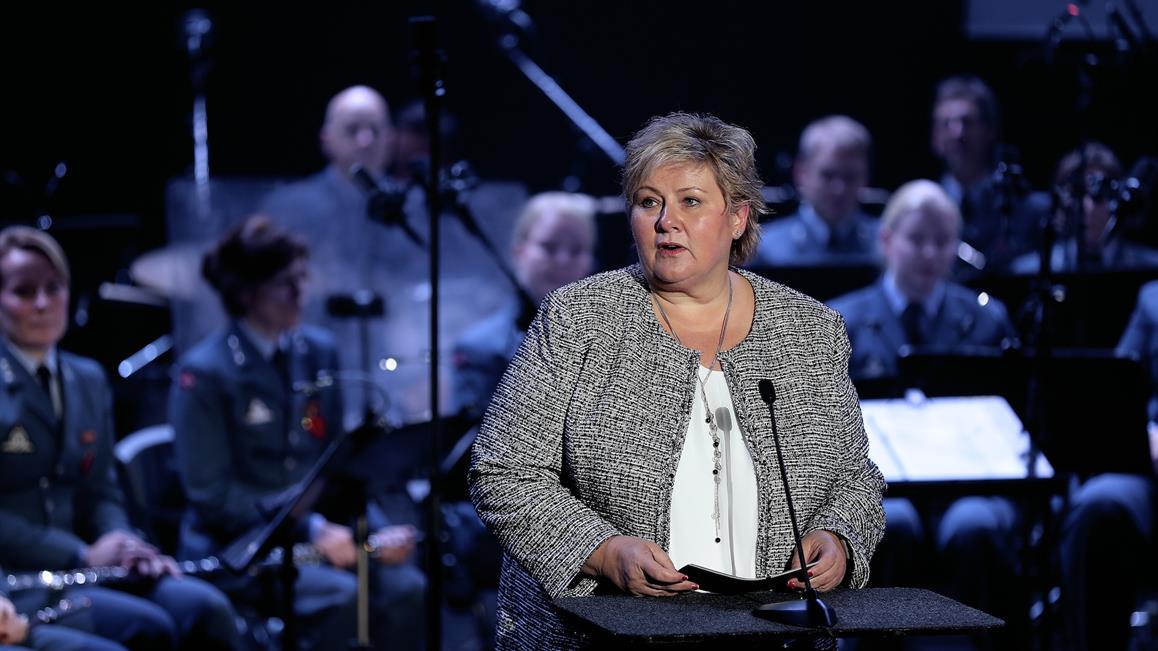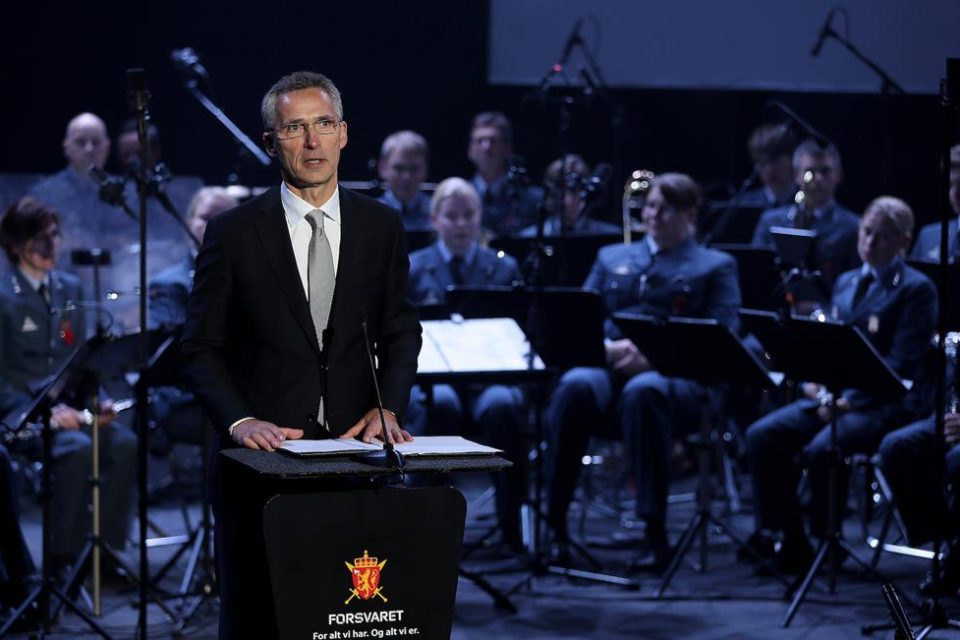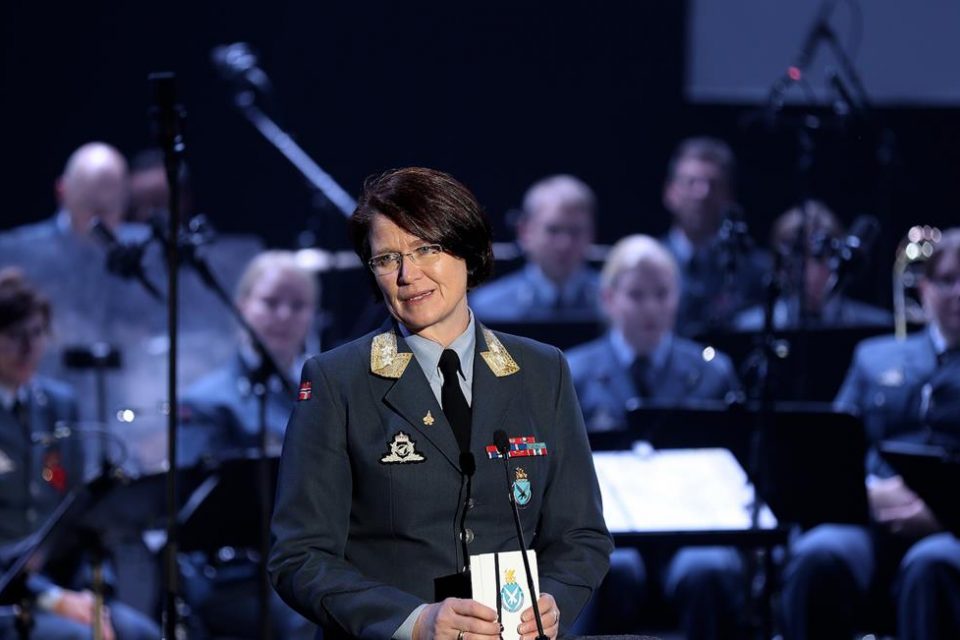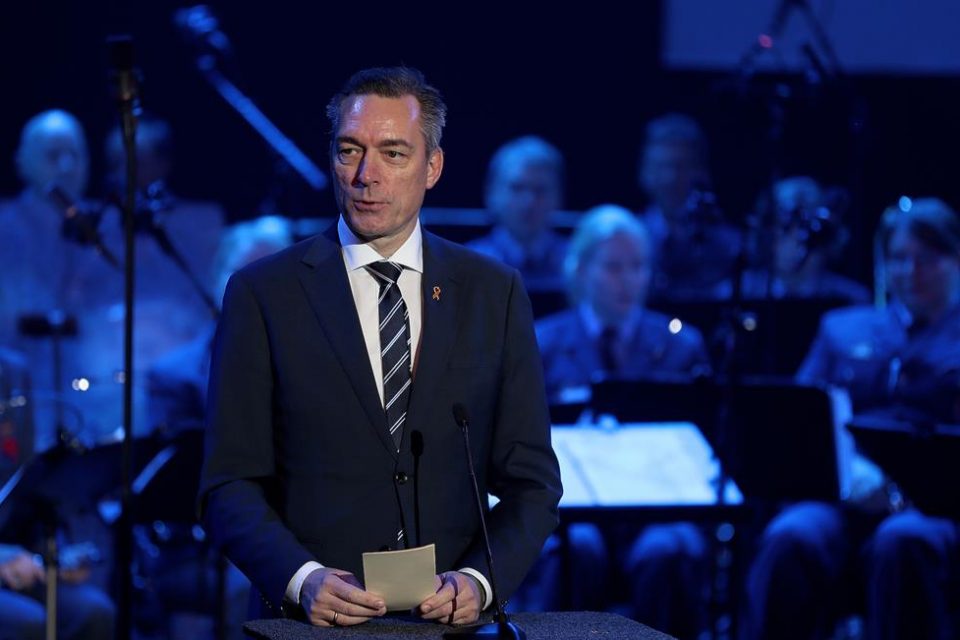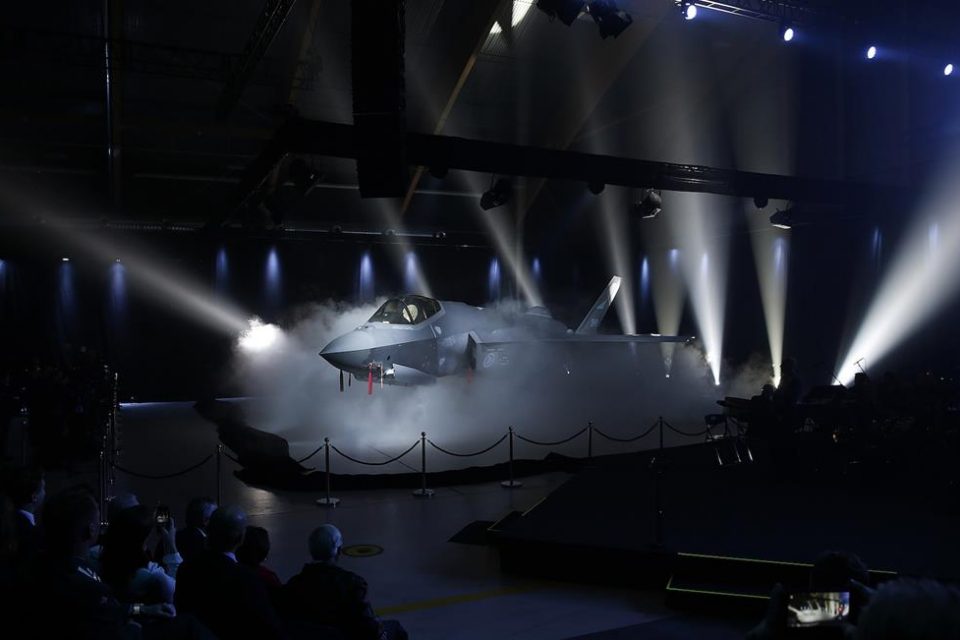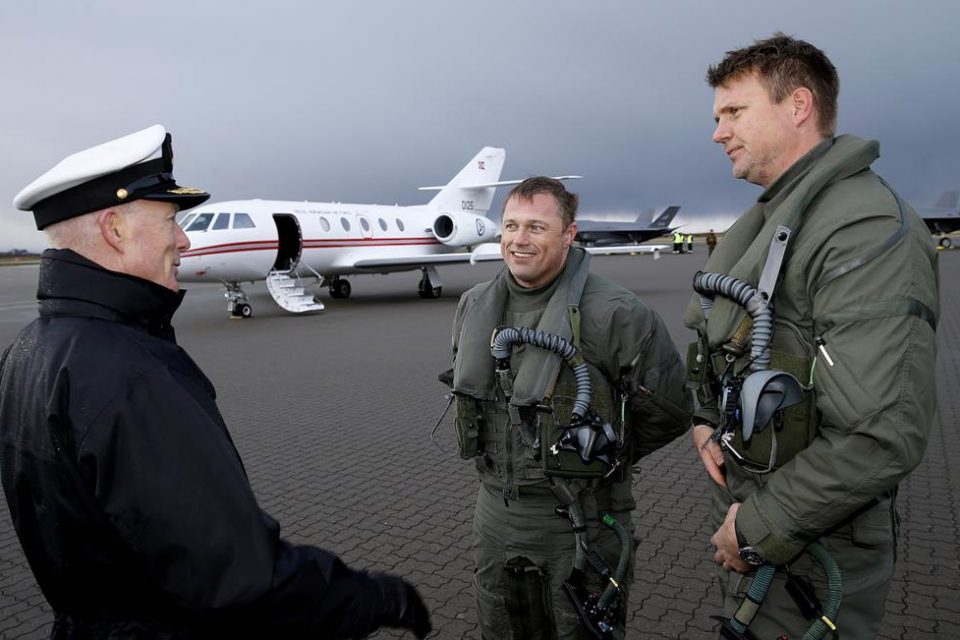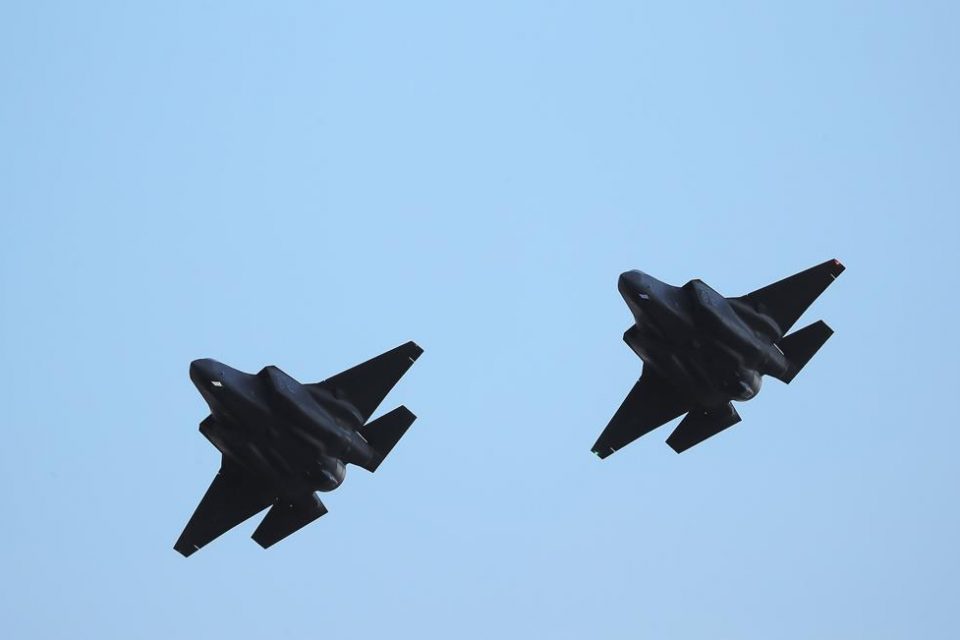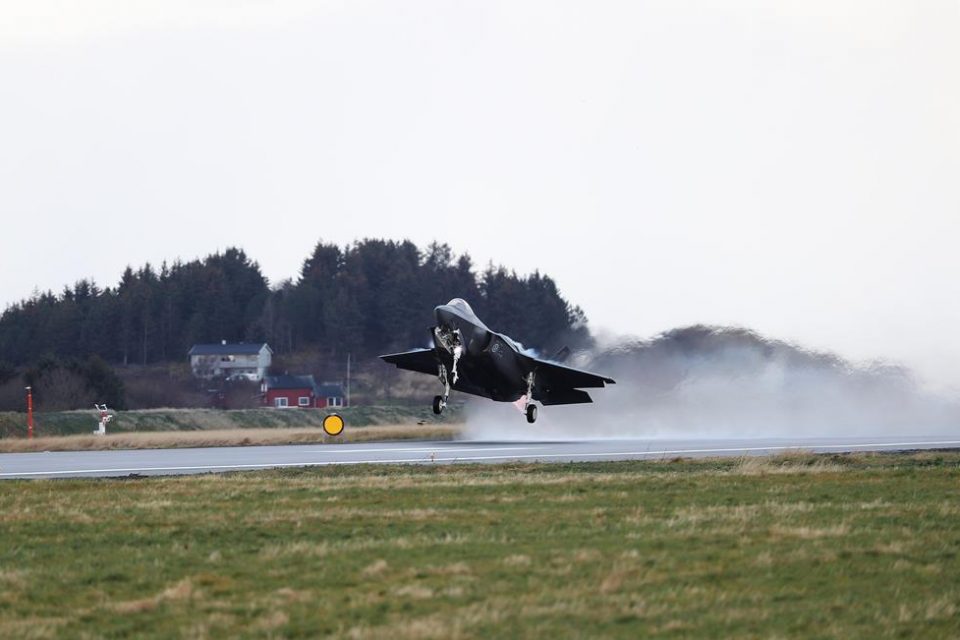2017-11-11 The first F-35s have arrived in Norway as the Norwegian Air Force stands up its initial training capability.
According to an article published November 10, 2017 on the Norwegian Ministry of Defence, the ceremony welcoming the new addition to the Norwegian Defence Force was highlighted.
Rain, sun, wind and prominent guests were all present when Norway’s first three F-35s were formally welcomed home on Friday 10 November.
Windy and rainy Norwegian autumn weather did not trouble the official welcoming ceremony in Hangar E at Ørland Air Station this Friday afternoon.
Just before the ceremony started, two of the Norwegian F-35 fighter aircraft pierced the sky above Ørland to greet the many guests present.
The three aircraft arrived last week, being the first F-35s in Norway.
The official ceremony was held this Friday – coinciding with the Norwegian Air Force’s 73rd anniversary.
Among many prominent guests were Norway’s King Harald, Norwegian Prime Minister Mrs Erna Solberg and Secretary General of NATO, Mr Jens Stoltenberg.
The F-35s will provide a substantial capability for securing Norway and Norwegian territories in the High North. Norway is NATO’s northern border, and the F-35s will therefore be important for the Alliance.
“This is an important day for Ørland, for Norway and for NATO. Ørland Air Station will be the centre in the modernised Norwegian Air Force, and Norway will have the most modern fighters” Mr Stoltenberg said, adding:
“The Alliance is renewing and changing, and the Norwegian F-35s are important in this work. The aircraft have a unique military power and a one-of-a-kind survivability. They will contribute in making the world’s most powerful alliance even more powerful”.
The ceremony was also broadcast live on Norwegian television, allowing everyone to follow the event. MORE WORK AHEAD
Chief of the Air Force, Major General Tonje Skinnarland, pointed out that there is still a lot of work to be done in the years ahead. Majord General Skinnarland will be in charge of incorporating the aircraft into the Norwegian Armed Forces organisation and prepare the aircraft for Norwegian conditions. The Norwegian F-35 will reach initial operating capability in 2019.
“This marks the start of reaching the next milestone: Making the aircraft combat ready. This work stretches far beyond the Air Force. F-35 facilitates joint operations, and the Armed Forces will work together to reach that potential, the Air Force chief said.
NORWAY’S SECURITY
Prime Minster Erna Solberg stressed the importance of receiving the first F-35s in Norway.
“The aircraft provide the Armed Forces with capabilities far beyond those of today. F-35 will strengthen not only the Armed Forces, but also Norway’s security”, the Prime Minister said.
The highlight of the ceremony happened midway, when a dark carpet fell, marking the official unveiling of the first F-35s on Norwegian soil.
Norway’s main F-35 base, Ørland Air Station, will play an important role in the the years coming. In 2019, the new aircraft will gradually be taking over for today’s F-16. The Norwegian government has decided to buy up to 52 new F-35A, and the whole F-35 fleet will be fully operating in 2025.
Editor’s Note: In the first slideshow above, the photos are credited to Torbjørn Kjosvold, Forsvaret.
Pictured in succession are the following: Norwegian Prime Minister Erna Solberg, Norwegian Minister of Defence, Frank Bakke-Jensen, Chief of the Royal Norwegian Air Force, Major General Tonje Skinnarland and Secretary General of NATO, Jens Stoltenberg.
In the second slideshow, the arrival of the F-35s for the ceremony are highlighted.
Pictured in succession are the following: the arrival of the first two F-35s, the first F-35 take-off in Norway, Pilots “Steel” and “Timber” (right) meet Chief of Defence, Admiral Haakon Bruun-Hanssen, after flying F-35 at the welcoming ceremony 10 November and finally one of Norway’s F-35s was revealed during the ceremony. Photos are credited to Torbjørn Kjosvold, Norwegian Armed Forces.
Norwegian F-35s Arrive in Norway: Remembering the Past and Preparing for the Future (Updated)
And for the broader strategic context, see the following:


